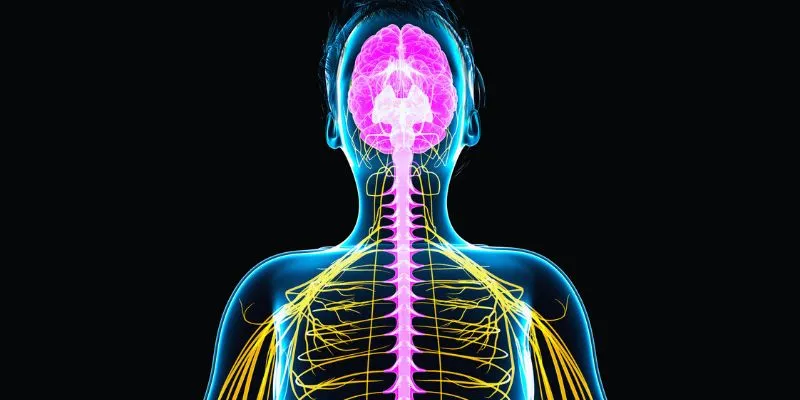The Impact of Underbites on Oral Health and Overall Well-being
Prognathism, commonly known as an underbite, is a dental condition where the lower teeth extend beyond the upper teeth. While often perceived as a cosmetic issue, untreated underbites can lead to several dental complications, including chewing difficulties, speech problems, and even joint pain. Understanding the causes and impacts of underbites is crucial for patients and parents to make informed treatment decisions. Underbites can result from various factors, ranging from genetics to environmental influences.
What Causes an Underbite?
An underbite may develop due to a mix of hereditary, developmental, and environmental factors. Here are some common causes:
1. Genetic Predisposition
Jaw structure often runs in families. If a parent has a noticeable underbite, the child may also inherit this trait.
2. Childhood Habits
Certain childhood habits can lead to jaw misalignment. Thumb sucking, prolonged bottle feeding, and excessive pacifier use can exert pressure on the jaw and teeth, causing misalignment.
3. Jaw Misalignment Due to Injury
Facial injuries, especially during developmental years, can affect jaw alignment and contribute to an underbite.
4. Medical Conditions
Rare genetic disorders, such as Crouzon syndrome or Treacher Collins syndrome, can cause structural abnormalities that result in an underbite.
Symptoms of an Underbite
Underbites can present various symptoms, from cosmetic concerns to functional challenges. Common symptoms include:
- Difficulty Biting and Chewing : Misalignment can make it challenging to chew food properly.
- Speech Issues : An underbite may affect speech, sometimes causing a lisp or articulation problems.
- Jaw Pain and Discomfort : An imbalanced bite can strain jaw muscles, leading to discomfort.
- Altered Facial Appearance : An underbite can change facial structure, resulting in a more prominent lower jaw.
- Increased Risk of Tooth Decay : Misaligned teeth are harder to clean, increasing the risk of plaque buildup, tooth decay, and gum disease.
Health Risks Associated with Underbites
Untreated underbites can lead to several health complications over time. Here are potential risks:
1. Temporomandibular Joint (TMJ) Disorders
The TMJ connects the jawbone to the skull, and an underbite can strain this joint, causing chronic jaw pain, stiffness, and migraines.
2. Digestive Issues
Properly aligned teeth are crucial for efficient chewing. An underbite can hinder food breakdown, potentially causing digestive problems over time.
3. Sleep Apnea
Severe underbites may increase the risk of obstructive sleep apnea, a condition that disrupts breathing during sleep due to airway obstruction.
How Is an Underbite Diagnosed?
Diagnosing an underbite generally involves a dental examination and may require imaging studies. Dentists and orthodontists assess the bite, jaw alignment, and associated symptoms. In complex cases, X-rays or 3D imaging may provide a detailed view of the jaw structure.
Treatment Options for Underbites

Treatment options vary based on the underbite’s severity, the patient’s age, and overall health. Here are the primary treatment choices:
1. Orthodontic Braces
- Description : Braces gradually realign teeth to correct the bite. They are particularly effective in children and teens, whose jaws are still developing.
- Duration : Treatment typically lasts between one and three years, depending on the misalignment’s severity.
- Pros : Non-invasive and effective for mild to moderate underbites.
2. Invisalign (Clear Aligners)
- Description : Clear aligners like Invisalign offer a discreet option for correcting mild to moderate underbites.
- Duration : Aligners are usually worn for 12 to 18 months.
- Pros : Nearly invisible, removable, and generally comfortable.
3. Jaw Surgery (Orthognathic Surgery)
- Description : For severe underbites, surgery may be necessary to reposition the jaw.
- Duration : Recovery can take several weeks.
- Pros : Provides a permanent solution for severe cases.
4. Tooth Extraction and Reshaping
- Description : In some instances, removing or reshaping specific teeth can enhance jaw alignment.
- Duration : This is a shorter-term solution, often used alongside braces or other treatments.
- Pros : Minimally invasive and can provide immediate relief in certain cases.
5. Palate Expansion
- Description : A palate expander is commonly used in children to widen the upper jaw, promoting proper alignment.
- Duration : Typically several months.
- Pros : Effective for children, non-surgical, and can help avoid more invasive treatments later on.
Costs of Underbite Treatment
The cost of treating an underbite can vary significantly based on the chosen method, geographic location, and individual dental insurance plans. Here’s a general overview of potential costs:
- Braces : $3,000 to $7,000, depending on treatment duration.
- Invisalign : $4,000 to $8,000, based on severity.
- Jaw Surgery : $20,000 to $40,000, often higher for complex cases.
- Palate Expander : $1,000 to $3,000.
It is crucial to consult a dental professional to discuss payment options, insurance coverage, and potential financing plans.
Preventive Measures for Children

Parents can help mitigate the risk of an underbite in children through several proactive measures:
- Monitor Oral Habits : Limiting pacifier use and thumb-sucking can help prevent jaw misalignment.
- Encourage Regular Dental Checkups : Early detection is vital for effective treatment.
- Promote Good Oral Hygiene : Teaching children proper brushing and flossing techniques helps maintain healthy teeth and gums, reducing the likelihood of complications.
Living with an Underbite
For those opting not to pursue treatment or who have a mild underbite, there are strategies to manage daily challenges. Maintaining proper oral hygiene, being mindful of posture while eating, and avoiding habits that strain the jaw can lead to significant improvements. Collaborating with a dentist to monitor oral health can also help prevent complications.
Conclusion
Underbites can affect both the functionality and aesthetics of the mouth and jaw. Early detection and intervention are essential for managing the condition effectively. With a variety of treatment options available, from braces and aligners to surgical interventions, individuals with underbites can find solutions tailored to their needs. Consulting a qualified dental professional is critical for determining the best course of action, whether the underbite is mild, moderate, or severe.
